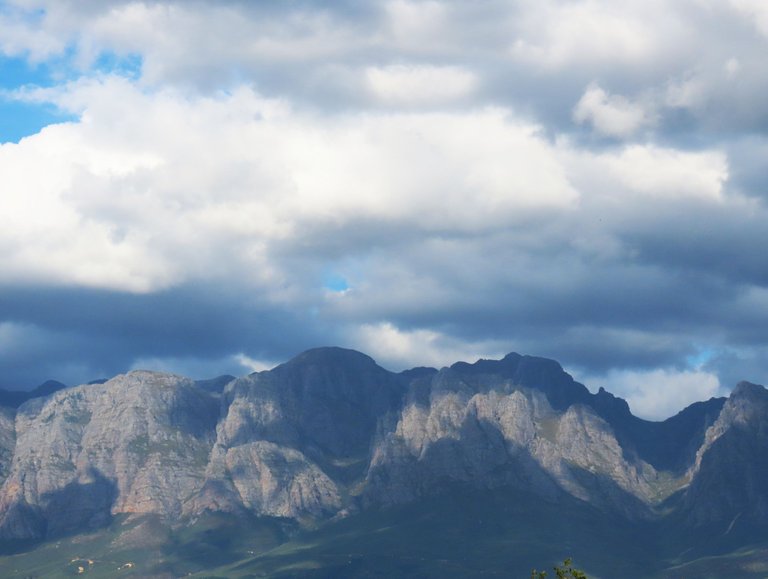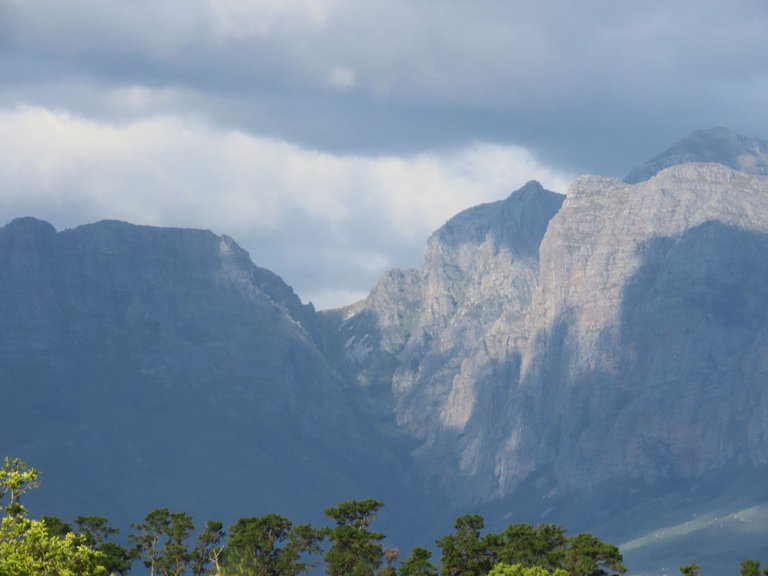...and ideal for landscapes, as you will see in here.

A real mood swinger, as bright colors in the north, and more shady colors in the east.
So, you can allow your emotions to walk around between the different views, and at the end, you will know that all in nature is as it should be. The wind and the appearances of the clouds in the sky are never a constant, as it all works together to present the magnificence of nature. Soft, gentle, and beautiful, and yet strong and bold.
Each photo has its own story to tell you, and so, I will not caption the pictures to reveal my own thoughts. There are 10 photos in the post and 10 or more stories that it will tell you as you look at them. May it be that you will find the views as lovely as I do.
So come and see.
Just some context about our climate to share with you.
The climate is typically Mediterranean; however, it is generally much cooler and more verdant than other areas in the Western Cape, with annual precipitation exceeding 1500 mm (as high as 3300 mm on the Dwarsberg plateau) and summer temperature maxima rarely exceeding 25 °C. Snow is not unusual on the higher peaks, like Verkykerkop, Somerset Sneeukop (Afrikaans: Snow Peak) at 1590 m high and The Triplets in the northern section of the range.
This area and the other ranges to the south are considered the hub of the Cape floristic region with the most biodiversity in the entire fynbos biome. The surrounding lowlands have rich alluvial soils supporting viticulture and other deciduous fruit farms.
I marked the last sentence of the Sourced article above to draw your attention to the fact that with the deciduous fruit farms comes the fact that the area also attracts an abundance of wildlife, as there is much to eat for the wild birds. Over time I have become used to the variances of birdlife that appear in each of the 4 seasons, and it is like meeting old friends when they return every spring to breed in the summer season.
With the mountains at the one side and the sea at the other side, it becomes difficult to choose where to go on any given day, as there is wildlife at both ends. Some have set times for their appearances, such as the Southern-right whales that appear during the months of June to December at the coastal town of Hermanus, and the Flamingos that appear in the lakes at spring season.
But then again, every now and then a new bird species arrives and those are the times that I look forward to. On some days, I can get a variety of birds on camera, then they disappear for the rest of the year. I have recently gotten a paradise-flycatcher, a rare cuckoo, and one of my favorites namely the African fish eagle on camera in 30 minutes on a farm. So, I look forward to sharing them in a post soon.
I hope that you enjoyed the pictures and the story.
Photos by Zac Smith. All-Rights-Reserved.
Camera: Canon PowershotSX70HS Bridge camera.
Thank you kindly for supporting this post.













